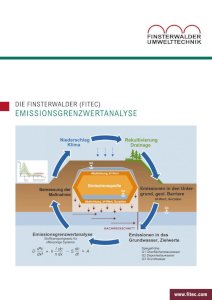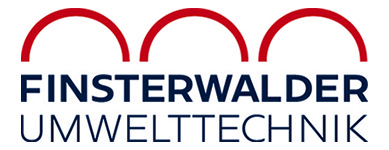Application
We offer you the emission limit analysis for the following applications:
1. Location-related protection and remediation of:
» Landfills
» Old sites and old deposits
» Deposits of all kinds (waste dumps, etc.)
» Soil and groundwater damage cases
2. Design of backup and restoration measures, regardless of its type, in the context of
Variant tests:
» Proof of the effectiveness of quality assured waterproofing systems for the site
» Proof of emission safety for the site
» Economical solution according to ecological and economical aspects
3. Emission limit analyzes for materials of all kinds and diverse fields of application to conserve natural resources:
» Recovery of mineral construction waste in earthworks
» Utilization of soil material in soil-like applications, such as the filling of excavations or for
Soil replacement measures to improve the carrying capacity
» Filling and backfilling of working rooms or backfilling in pits, fractures and opencast mines
» Mineral replacement building materials for road and road construction, for landfill construction (sealing materials)
or for the production of dams and noise barriers, etc.
4. Qualified assessment of the suitability of sites for the construction of intermediate and final repositories for
all types of substances (chemo- or radiotoxic) and identification of the required properties
5. Assessment of the current status of suspected land or old landfills
6. Quantitative verification of the discharge of a landfill from aftercare as part of the specialist planning
7. Quantitative determination of the period of the aftercare phase of a landfill and the costs as part of the planning

Glossary
TRIP THRESHOLD
“Groundwater monitoring values above which measures must be taken to protect groundwater. These trigger levels are set by the approval authorities for a location. The tripping thresholds are basically nothing more than a basis for rating the retention characteristics of a material or fuse. They are equivalent to the breakage criteria in other technical applications. “
MEASURING
“Assessment based on values in the planning phase in accordance with the principle of precaution, which location is suitable or which safety or remediation measures are ecologically effective for a particular location. On the basis of these values, a variant study is used to iteratively calculate how a site and the measures must be carried out, so that both ecological targets and user requirements as well as economic optimization are realized. “
DATA SPILL
“The” safety factors” for a landfill are not fixed sizes. They are dependent on the local conditions, i. the location in correlation with the backup or refurbishment measures and the period of use. In order to capture the inhomogeneity of location and content with all maximum spreads, you must expect property ranges for each input parameter. In order to determine the inhomogeneity of location and content with all maximum levels, it is necessary to know in the planning phase which emissions in the groundwater are to be expected in the worst case at the conclusion of the safety or remediation measures be calculated with property ranges for each input parameter.
SUITABILITY PROOF
“Technical assessment for a safety measure (eg in Germany for quality assurance for technical waterproofing systems in landfill engineering suitability assessments in terms of requirements for material data, performance, durability, suitability test, installation regulations, etc. of the LAGA Ad-hoc AG” Landfill Technology ” in front). The proof of aptitude does not include a link between the environmental claim (regulatory targets, eg triggering thresholds) and the effectiveness of the action and the data for a site. “
EMISSION LIMIT ANALYSIS
“Natural-based calculation method that allows analysis over any period of time. It takes into account the natural variability of all data used (including climate, geology, hydrogeology, data on sources, landfill protection, long-term surface use, etc.) and their time-dependent change. The investigated period of time must be chosen to be at least large enough to detect the maxima of the groundwater pollution. The analysis follows the measuring principle of ion chromatography and is based on the calculation of the mobile ion swarm from the substance source, taking into account the molecular weight, charge type, valence and half-life of all landfill ingredients. The result is proof of effect in the planning phase. “
MEASURES VALUE
“Values for impacts or pressures above which, taking into account the respective land use i. d. R. is from a harmful soil change and measures are required. “
EFFECT PROOF, PROOF OF EMISSION SECURITY
“Result of emission limit analyzes with assessment of the safety or rehabilitation measure. Includes the linking of the effectiveness of a given action with the local conditions and the environmental objectives of the approval authority for a given location. Only in this way is it possible to carry out reliable verification of emissions safety for the reliable assessment of various measures. This allows the sealing systems offered on the market to be compared and evaluated on a consistent basis. “
OBJECTIVE, TARGET VALUE
“Measurable or calculated from measured values minimum requirements for the result of the emission limit value analysis for the reliable verification of emission safety. Ecological targets of the department are focused on the protection of soil, groundwater and surface water (see target value: triggering thresholds, measure values). Economic aspects of the client / operator include requirements for u. a. Investment and operating costs, useful volume, service life and reuse of the area. The respective targets are considered equally in the emission limit value analysis. “
